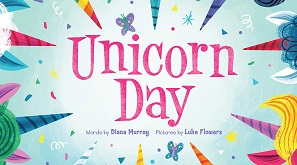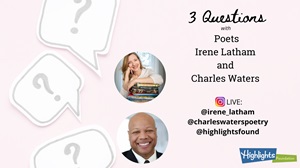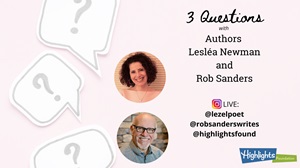 Special thanks to Diana Murray (dianamurray.com) for this guest post! Diana was faculty for Getting to Know Your Rhyming Picture Book.
Special thanks to Diana Murray (dianamurray.com) for this guest post! Diana was faculty for Getting to Know Your Rhyming Picture Book.
To Rhyme or Not To Rhyme
Are you unsure about whether you should write your picture book in rhyme? Maybe you’re drawn to the rhythm, but you’re afraid, because chances are you’ve come across advice to stay away from rhyme. People often say “rhyme is difficult to sell,” “you should rewrite all your manuscripts in prose”, or “editors and agents hate rhyme.” In some ways, that advice is true. And yet, if you go to any library or bookstore, you can readily see that there are many recently published rhyming picture books on the shelves–some of them bestsellers. Why the discrepency? Here are four common reasons for the negative blanket statements about rhyming text, and how to give your manuscript(s) the best possible chance to sell.
Craft: Take the Time To Do It Right
The “slush pile” is full of manuscripts from beginners, and editors/agents are used to seeing the same issues pop up again and again. That goes for both prose and rhyme. BUT, problematic rhyming texts are that much more grating and painful on the ears. It’s the difference between simply saying something that isn’t quite right or singing it off key. There’s an added cringe factor and many more places a writer can go wrong. It only takes reading a few lines to see if the meter is clunky, if the rhymes are forced, or the sentences are inverted or unnatural. The concept or story itself could be great, but if the rhyming stands out in a bad way, nobody will keep reading to find out.
So if you’re going to write in rhyme, take the time to do it right. Read a ton of rhyming books and poetry (note the differences in rhythm), join a critique group, develop a strong understanding of meter, beats, and end rhymes, and practice, practice, practice.
Story: Keep It On Track
Those who write in rhyme have the added disadvantage of learning two things at once. Rhymers have to learn about picture book structure and story arc, just like everyone else, but ON TOP OF THAT, they also need to learn the rules of metrical verse. Neither task is easy. And sometimes, focusing on meter can cause the overall storyline to suffer. For example, the end rhymes can take the reigns of the plot and lead it off track. One minute, your main character is setting out on a “boat”, and the next thing you know, there’s a “goat” involved, simply because it rhymes. That’s an exaggerated example, but it’s a common issue and one you need to watch out for. The surprise factor of end rhymes is part of the fun. But you can’t let the rhymes take too much control or sound far-fetched.
One way to keep things on track is to use an outline in prose. I like to plan everything out first, with a line or two of text for each spread/page (using page numbers helps with pacing). Then I go back in and flesh things out in verse. It may even be helpful for some people (especially when starting out) to rewrite a story completely in prose to get it right, and then translate it back into rhyme. Or even keep the prose version if you end up liking it better! Keep an open mind.
Proof: Show Editors What You Know
Most editors and agents are not experts when it comes to rhyming verse. So even if the concept is appealing and the text seems to scan well, they may be reluctant to take on a rhyming text, especially from someone who is new to the scene. Rhyming text is very difficult to edit when you’re not familiar with the rules. Even when you do know the rules, it’s notoriously difficult to revise. That’s why you need to bring your own confidence and expertise to the table. It helps to have a little proof. For example, you can try selling some rhyming poems to various magazines (like Highlights, Spider, etc.). This will boost your creativity, give you more practice with different forms, give you practice revising, boost your confidence, and as a bonus, give editors a little more reason to believe in you. You can also submit your rhyming work to contests through SCBWI (The Magazine Merit Award, WIP Grant, etc.) or popular writing blogs.
Translations: Don’t Let Them Scare You
People sometimes say rhyme doesn’t sell because it’s difficult to translate. This one usually has writers nodding their heads in agreement. It’s just so logical. You might think, “Of course! Rhyme is difficult to translate into other languages. Therefore, it’s difficult to sell rights internationally, which means less profit. THAT’S why I can’t sell my rhyming text!” OK, yes. It IS difficult to translate and still keep the text rhyming (though it can be done in a few languages, like Spanish and German). Nonetheless, there are popular rhyming texts out there which have been translated into every imaginable language. In fact, the translations don’t necessarily have to rhyme. Furthermore, a book can still be considered very successful and profitable even if it doesn’t sell a single translation. In the end, the difficulty of translation is not enough of an issue that it should scare you away from writing in rhyme, if that’s what you truly want.
And that’s what it really all boils down to. What do you want? Is poetry your passion? Does writing in rhyme give you joy? It may take time to find out. So why not give yourself creative freedom? There’s no need to take rhyme off the table as an option. Even if you don’t stick with it in the long run, it can help you develop your voice and your skills, or could lead you to other approaches (free verse?)
What you’ve heard is mostly true. If you decide to write in rhyming verse, your path may be more difficult. You will have more to learn and you may encounter more opposition, too. And yes, some editors are not fond of rhyme. Not just poorly written rhyme, but rhyme in general. It may not be their cup of tea (which rhymes, ironically). But that’s OK. Editors have all kinds of personal preferences, as do readers. Write what you enjoy writing (as only you can!), take the time to do it right, read and learn as much as possible, and polish your story till it shines. Then do it all again! As Julia Child used to say, “Do not be afraid, and above all, have fun.”
 Diana Murray is the author of over a dozen rhyming picture books and early readers, including her newest release Unicorn Day (Sourcebooks, June 2019) which is an Indiebound bestseller. Diana’s award-winning poems have appeared in Highlights, High Five, Hello, and many other magazines and anthologies. She grew up in New York City, and still lives nearby with her husband, two daughters, and a smarty-pants cockatiel named Bean. For more information, visit dianamurray.com.
Diana Murray is the author of over a dozen rhyming picture books and early readers, including her newest release Unicorn Day (Sourcebooks, June 2019) which is an Indiebound bestseller. Diana’s award-winning poems have appeared in Highlights, High Five, Hello, and many other magazines and anthologies. She grew up in New York City, and still lives nearby with her husband, two daughters, and a smarty-pants cockatiel named Bean. For more information, visit dianamurray.com.
Rhyming Picture Book Rescue
Has your rhyming children’s story
left you wavering with doubt?
Are your stanzas up to snuff?
Has your meter petered out?
Have your end-rhymes taken hostage
of the plot and how it flows?
Are you questioning your choices?
Do you wish you’d stuck with prose?
Well, before you shred your pages
in a fit of sheer frustration,
why not try this brand new workshop
at renowned Highlights Foundation!






